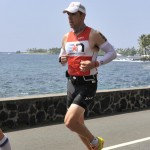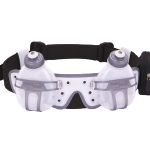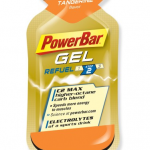Hot Marathon Damage Control Formula
Boston Marathon Damage Control Formula
Despite the fact that the Boston Marathon isn’t considered tough enough to be an “official” marathon course that can support a world record effort, it’s not exactly a cake walk either! As thousands of runners each year will tell you, a net downhill run for 16 miles into an uphill push for 5 miles followed by a downhill run for another 5 is essentially torture for your body.
But then you read the weather report and see the high will be 82 degrees on Marathon Monday, with winds from the South West. A slight tail like that means you won’t really “feel” a breeze…so it’s going to feel even hotter than it is.
That’s right…hard just got HARDER.
Here are some tips on how you can mitigate the effects of the heat on your overall day, straight from what I have learned racing in the lava fields of Hawaii for the Ironman World Championships.
Boston Marathon Pre Race
Given the fact that you have been training all winter, and that it’s not going to be that warm over the weekend, there’s little acclimatization you can do to prepare for the day. But you can still take some steps to make sure that you are in the best possible place.
In addition to the general race advice of getting off your feet as much as possible and getting plenty of rest, you will also want to:
- Stay Hydrated — Alternate sipping water and sports drink over the course of the day. Do Not Overdrink Out Of Fear. Just sip away…if you start on Saturday, you’ll be more than crazy hydrated by Sunday AM…and you can simply maintain.
- Lightly Salt Your Meals — Again, not crazy, but adding some salt to any meal you have that’s appropriate (not your cereal!) will help you prepare for the sweatfest.
- Make Sure You Have A Hat & Sunscreen — Use the days before the race to do some shopping…you might even want to consider a FuelBelt to carry your own hydration.
- Seek Out Morning Shade — Try to avoid the sun on race morning out in Hopkinton; and bring something to stay warm as it will be cool in the morning
Boston Marathon Race Modifications
Here are a variety of strategies to handle the heat. You don’t have to do them all, but be sure to review them. You never know which one will save your day!
Cover Up — In the picture of me on the left from Alii Drive in Kona, you can see a couple of key things. I have a hat on with a mesh top: coverage, yet cool. Arm Coolers which protect me from the sun but retain water if I pour it on my arms…again to keep me cool. And a Neck Cooler, which held cold water to keep me cool as well.
You’ll want to put on sunscreen, with extra on the right side of your body for the focused sun on the point-to-point course!
Hydrate Frequently — More fluids is important, but it’s better to get them in frequently rather than slamming a big cup every few miles. I use a FuelBelt (left) to supplement what I take from the aid stations. Don’t forget to walk 15 to 30 steps at each aid station to make sure you get your fluid in!
Eat Smaller, More Often — You’ll need to fuel your day, but bigger portions won’t cut it. And solid foods will be really hard to digest. The PowerBar station is ideal (and fun to run through!) but it’s not until mile 16. Consider carrying some of your own and taking one (or part of one) every 45 minutes with water. Again, less – but frequently – is more!
Adjusting Your Boston Marathon Race Pace
All of the stuff above aside, the really important thing you need to do is adjust your race pace. Simply put, 99% of us simply can’t run to our potential when the temperature goes above 60-degrees. It’s a bitter pill to swallow, as many have trained for the race of their lives, but ignoring the weather and forging ahead is, for all intents and purposes, statistically suicidal.
3 Seconds for Every 5 Degrees — For every five (5) degree increment above 60-degrees, add 3 to 5 seconds per mile to your goal pace. So if you wanted to run 8:00/mile…and it’s going to be 80 degrees, you’ll want to add 4 x 3 to 5 seconds to your pace. That means a best case of 8:12/mile; or a more likely 8:20/mile pace. Remember, this isn’t about being slower…it’s about running a better overall race. You’ll see the proof in your final placing!
Watch Your Heart Rate — While we preach racing Boston Marathon with pace, there’s the tricky matter of heart rate as well. While fitness is in your muscles, your heart has to support the workload that your brain is telling your muscles to do…and in hotter conditions your heart has to pump blood to your muscles as well as to the surface of your skin for cooling (not to mention protecting your brain). It’s a tall order and means your heart rate will be higher for the same effort pace. Anything above six (6) beats higher than normal means that you will need to back off the pacing to remain steady for your day…it’s just not sustainable.
Boston Marathon Damage Control Conclusions
Racing in the heat isn’t necessarily fun, but it can be done well. Change your focus from strictly performance to being steady, and you’ll have a great race relative to the competition and you’ll be able to talk about all the carnage you saw on the course. Ignore this advice and, well, you could be a Zombie on Monday. Be smart, have fun, and go fast!





2 Responses to “Hot Marathon Damage Control Formula”